Continuing with the series of churches in the places I visit. My daily job gives me some free time of about two hours either in the morning or in the afternoon, and the highly commuting nature allows me to visit several landmarks without spending a lot of time and commuting. . Therefore, I often choose religious buildings, museums, and tourist attractions that are less complicated to use the above suitable time. Especially, religious buildings have great attraction, showing the beliefs of the people there, where community activities are close and easy to move to and easy to find. Each community will have its own character and architecture, the different campus is sometimes just small details that need to be observed carefully to admire it better. This time it is Domaine de Maire church in Da Lat city, Vietnam.
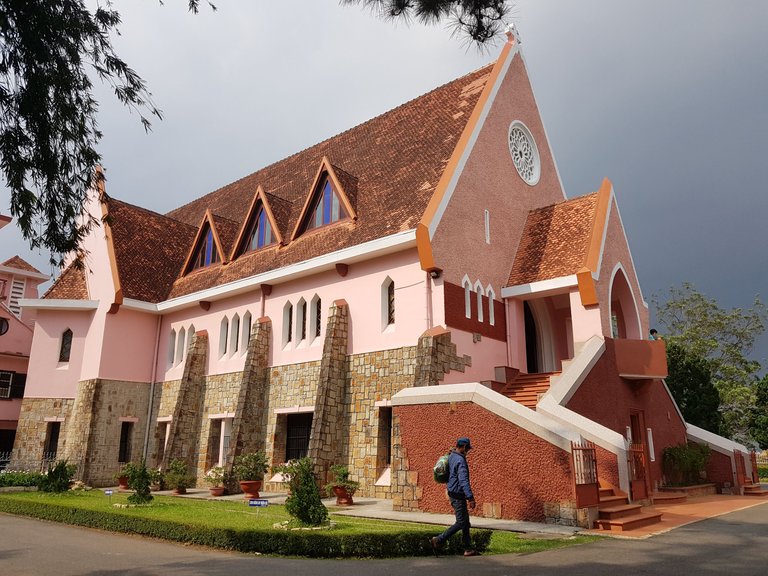
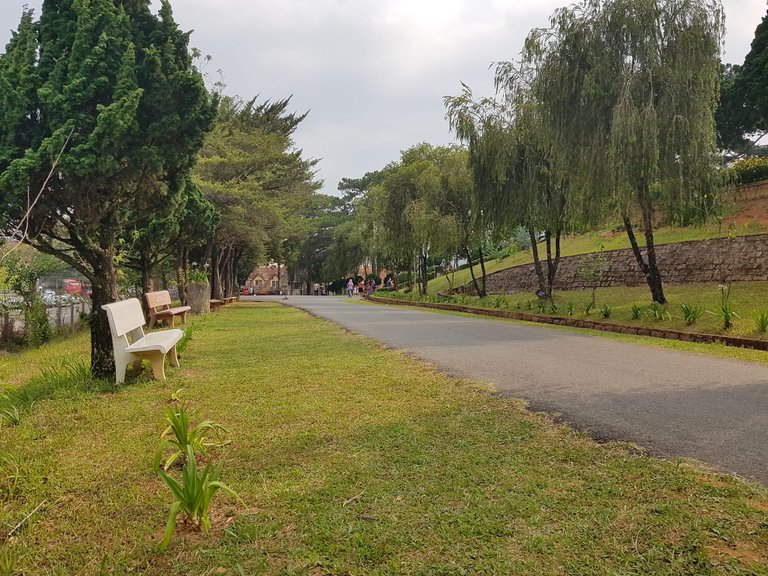
The name is very strange, named after the French transliteration Domaine de Marie. At first I thought it was a French church built for the French in Indochina. However, it is not so complicated, it was built thanks to the call and contribution of money by the wife of French Governor General of Indochina Jean Decoux period 1940-1945. She wanted to help people have more chapels to live more conveniently because the mountainous terrain helps parishioners from far away to approach closer. It was initially used as the main convent of the Sisters of the Sisters of Charity of Saint Vincent in the period 1940-1943. Besides, it also adopted orphans, took care of and taught jobs in the houses behind and continues to this day. Today it belongs to Mai Anh parish, located at 1 Ngo Quyen street, ward 6, Da Lat city and about 3km northwest of the city center.
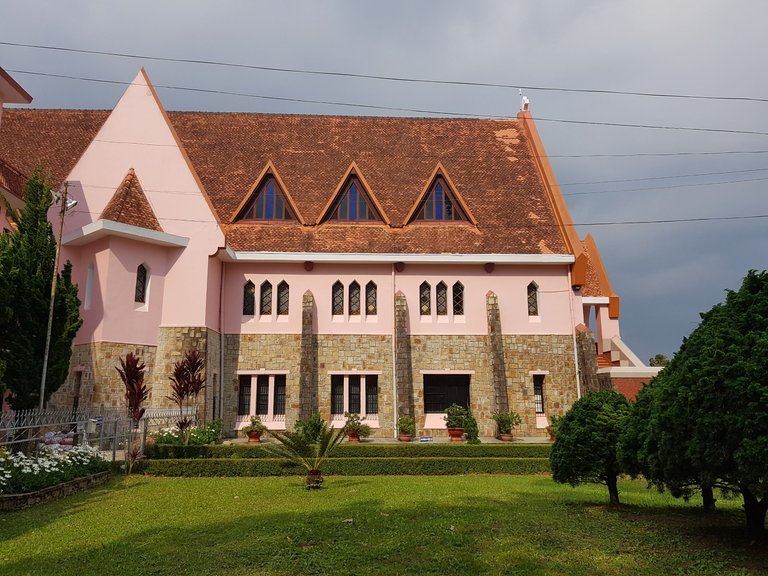
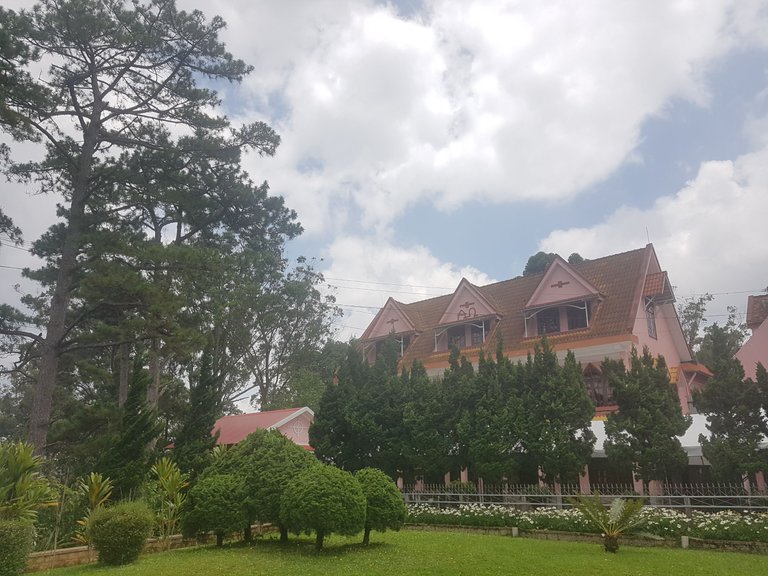
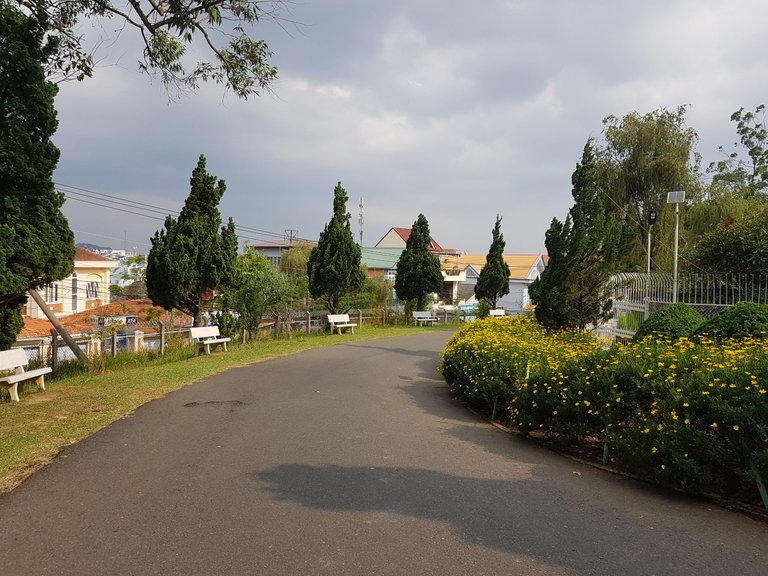
It is also a notable sightseeing and tourist attraction and is close to other famous tourist attractions. I think the best time here is between 10am and 3pm. In addition to the appropriate sunshine shining in to create good visual effects by the light pink color from the time of construction until now, it is also a beautiful time when the sun is dry. This land very often rains in the afternoon to evening, in the early morning, thick fog or large clouds hide the sun behind. Because it is located on a low hill, we will go through the stairs leading up through the rows of pine trees. It does not have the usual rectangular or square structures, instead it has a design of many isosceles triangles The back of the church is simple with a rose window and a small crucifix on the roof.
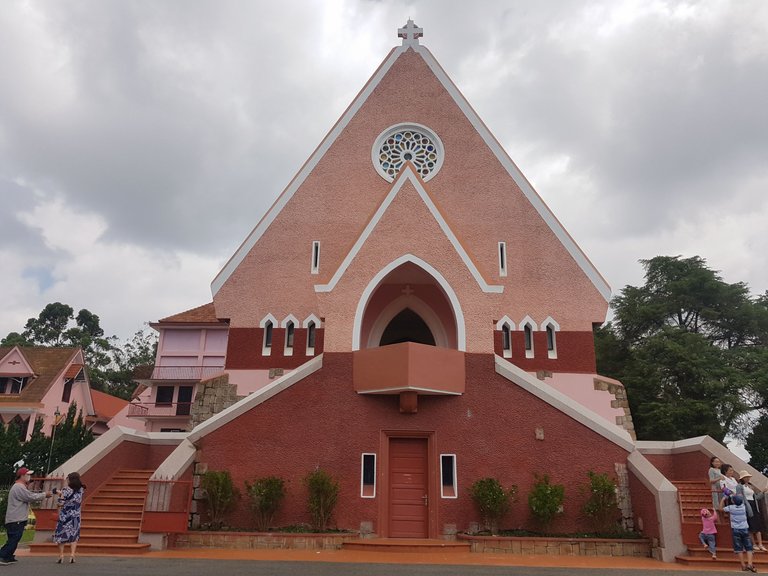
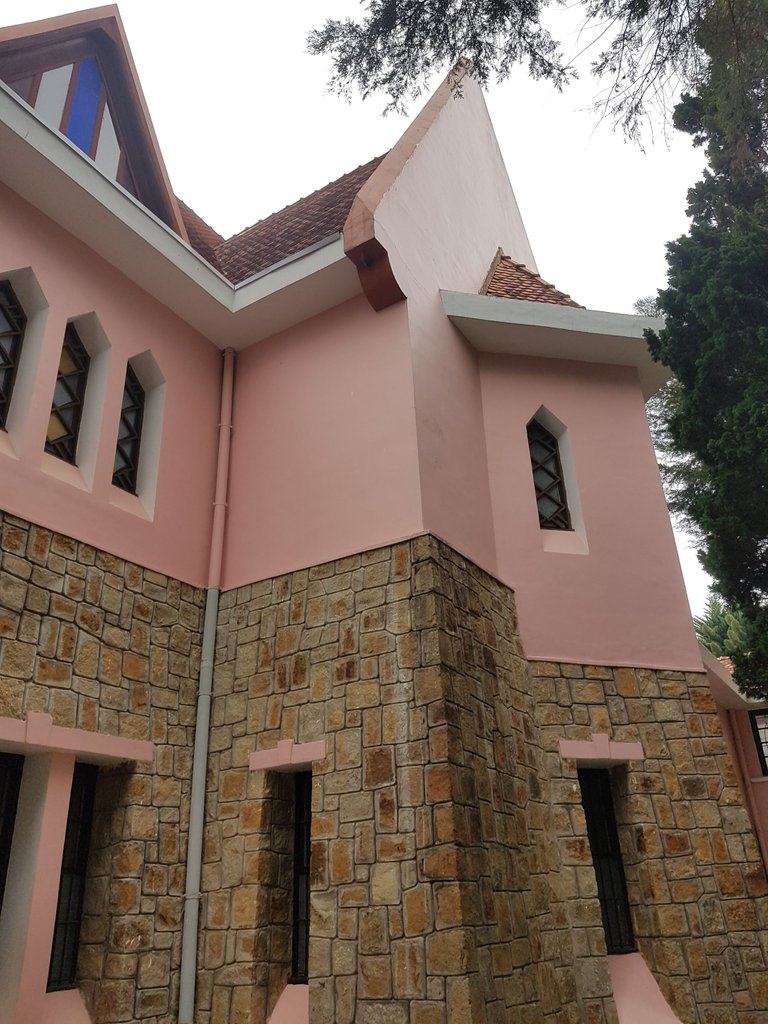
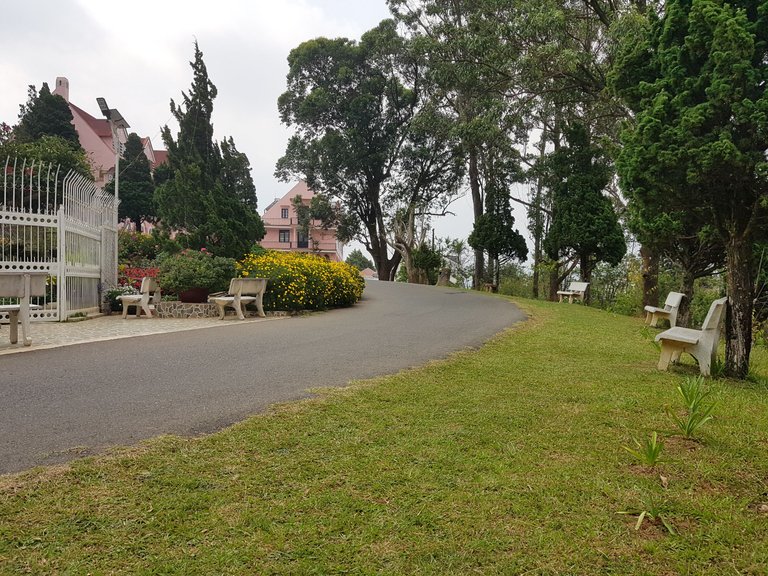
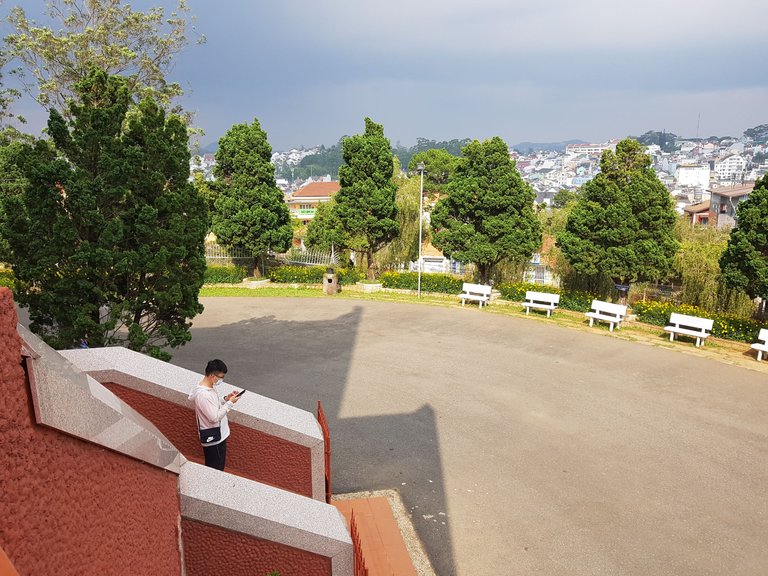
Its architecture is quite familiar to the locals here, pay attention to its roof. Shape a sharp and steep, soaring triangle quite nicely. It is modeled as the communal house of the ethnic minorities in the Central Highlands of Vietnam (a kind of community house of the village, made of bamboo and wood and roofed with straw and thatch and is usually located in the middle of the village). village used for meetings and festivals). It still adds a few western style elements (France) such as creating a cross shape if viewed from above, the side windows are fitted with French stained glass windows. In addition, the church's foundation is built of fairly high stone, raising the church's foundation one floor higher and leading the way by curved steps on both sides. This is definitely not an Asian design. Its special feature is that it is built with binders such as lime, molasses, and split stone without using cement.
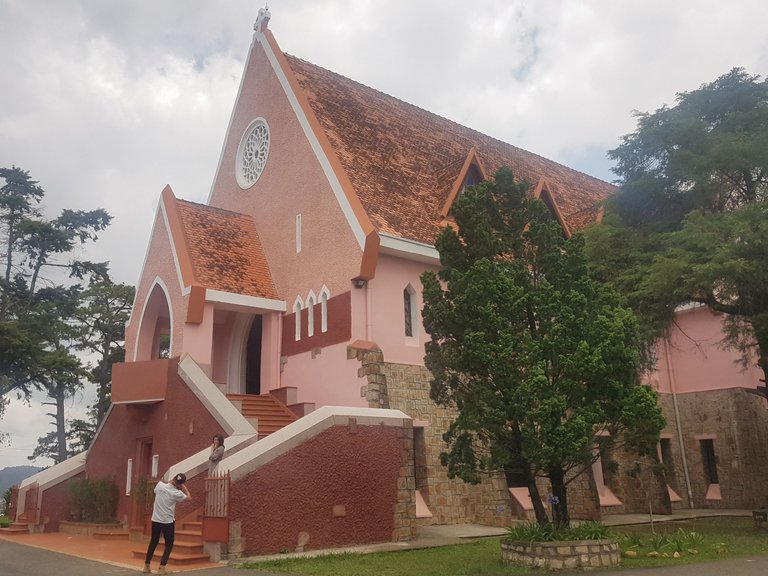
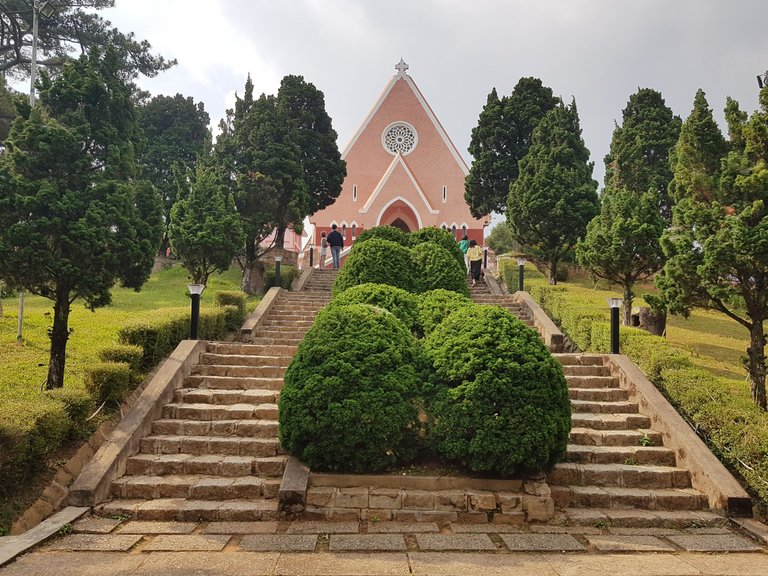
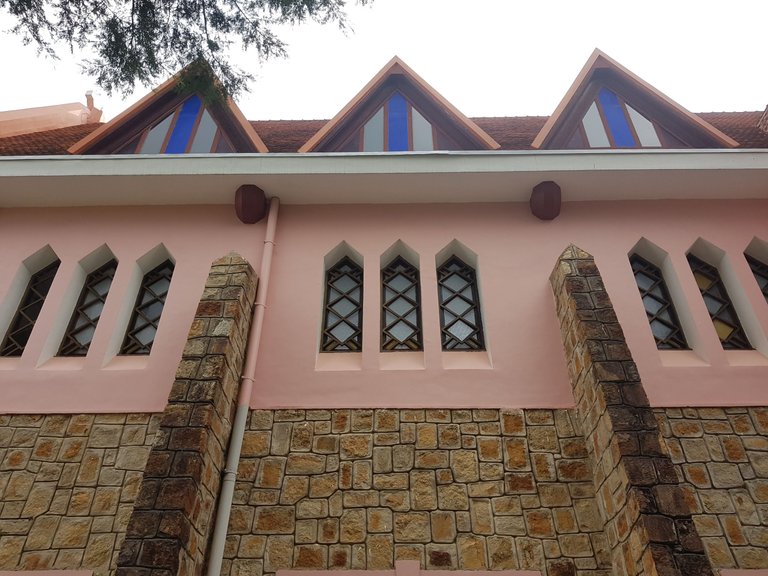
The space inside it is quite small and does not have the usual roof support pillars. It turned out that the roof extended to the base of the floor like a discreet and solid downward triangle. Slender but sturdy wooden trusses support the two heavy roofs above. The top of the church and the main altars, around the hips are extremely simple with a cross of Jesus and a statue of Our Lady standing on the globe designed by French architect Jonchère in 1943. donated by Decoux, although she had a fatal accident on Prenn Pass not long after. Her grave is kept in a side chapel behind the front part of the church. Unfortunately, outsiders are not allowed to enter due to the safety of the missionaries inside.
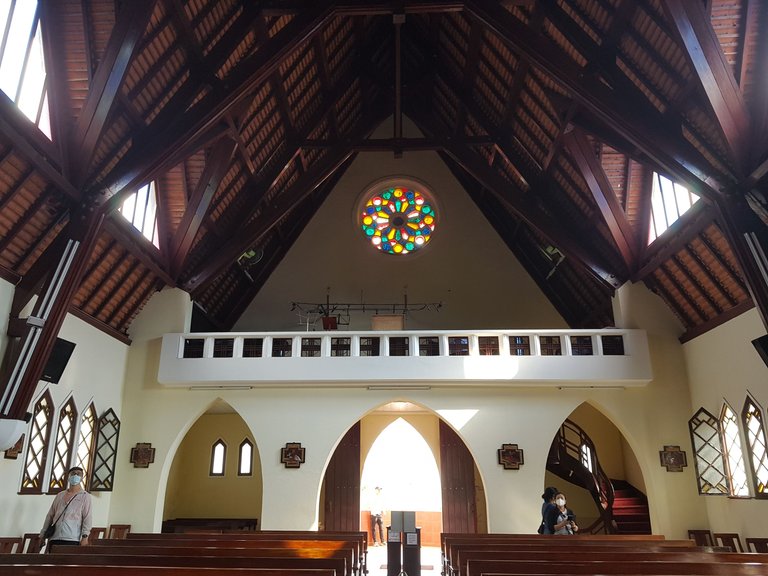
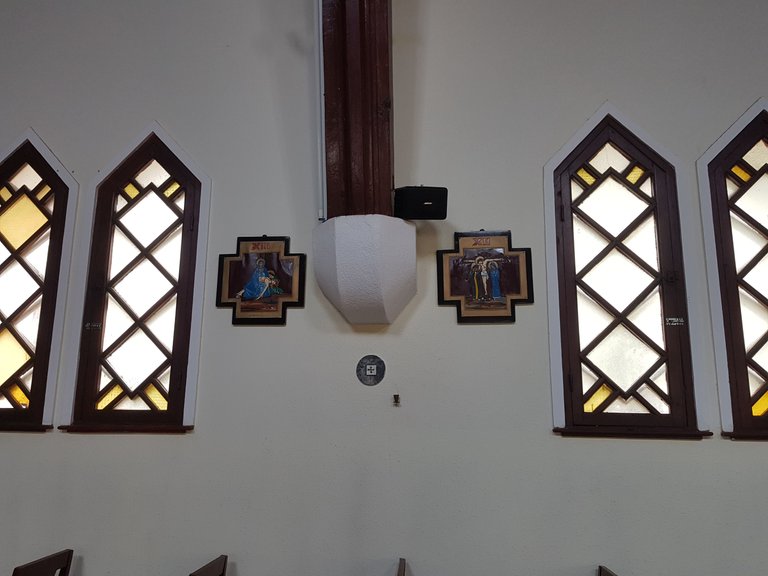
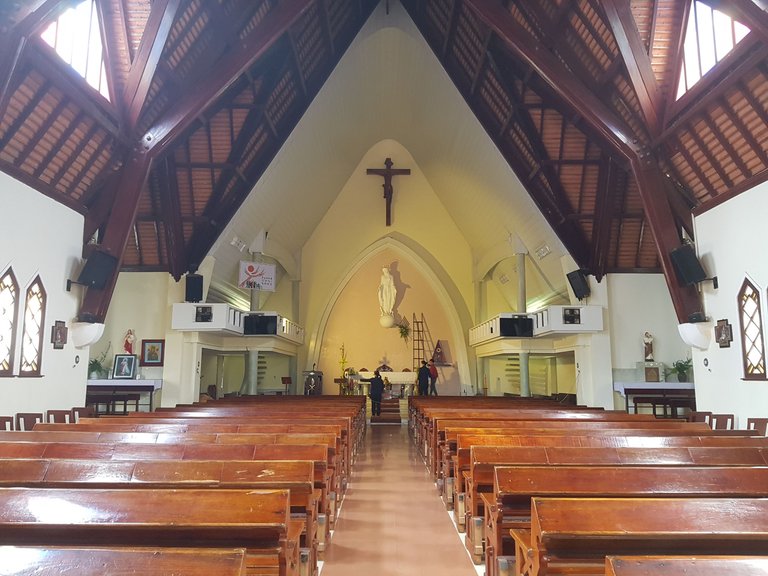
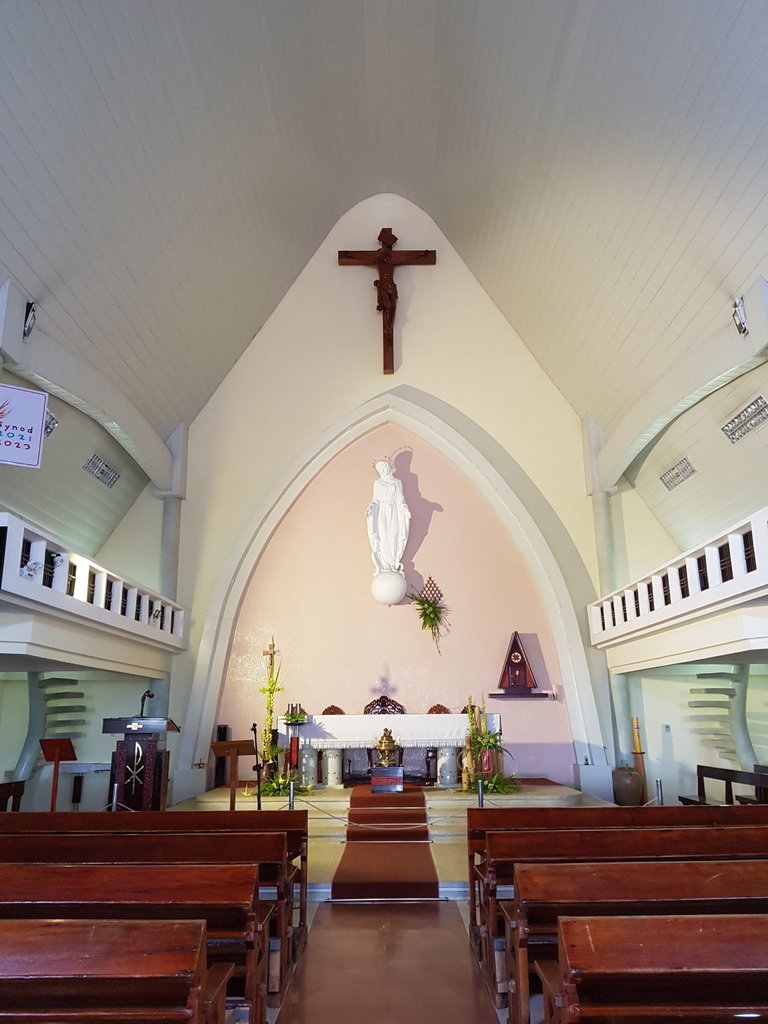
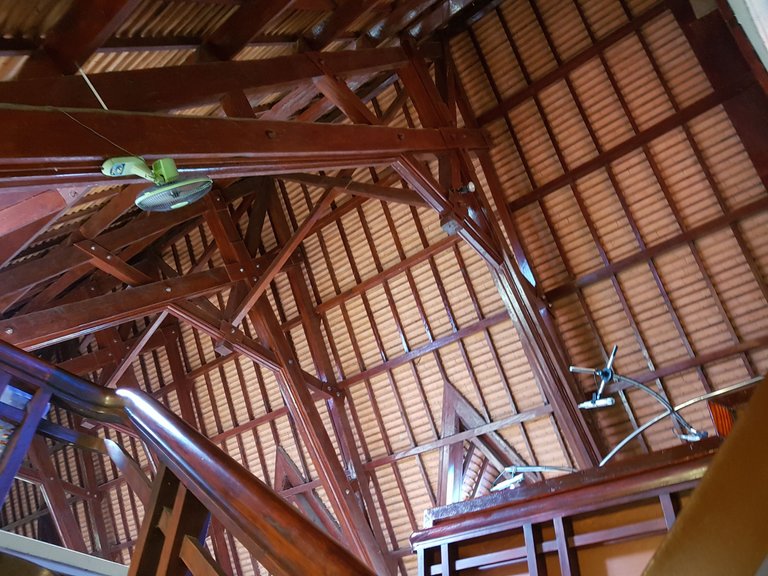
Here the campus is quite spacious and has many trees and flowers. There are many stone benches to rest or pray.
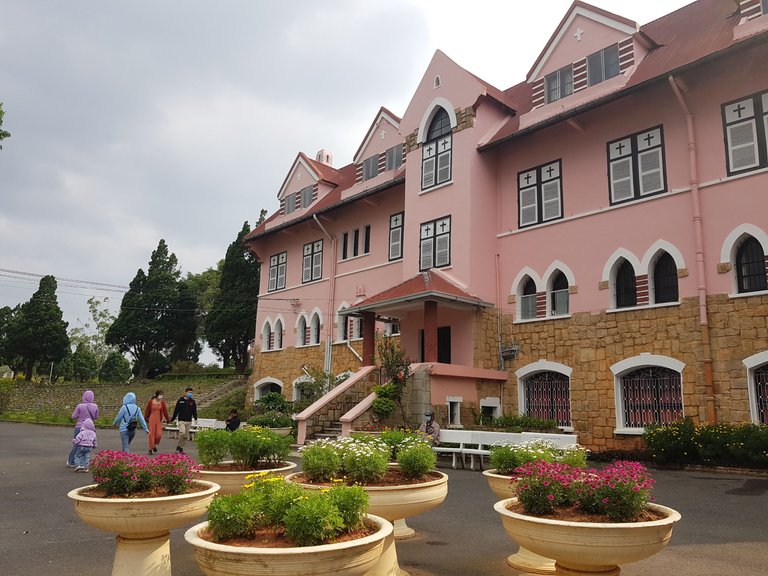
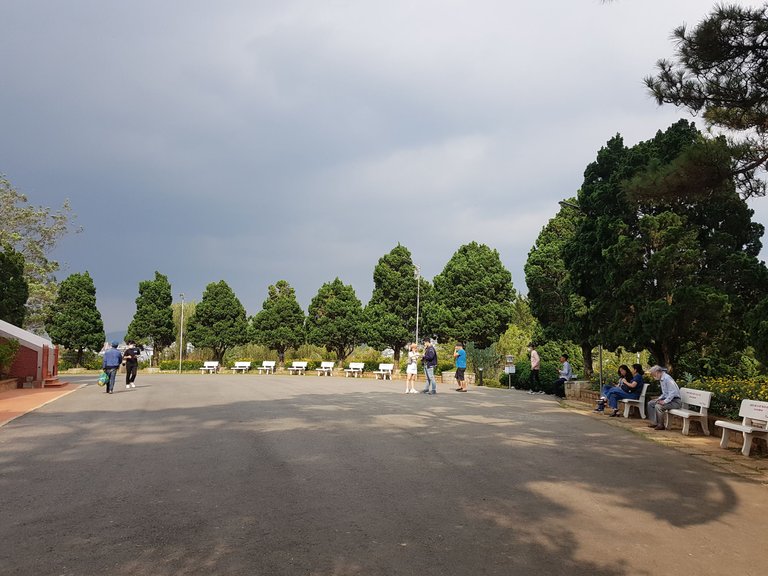
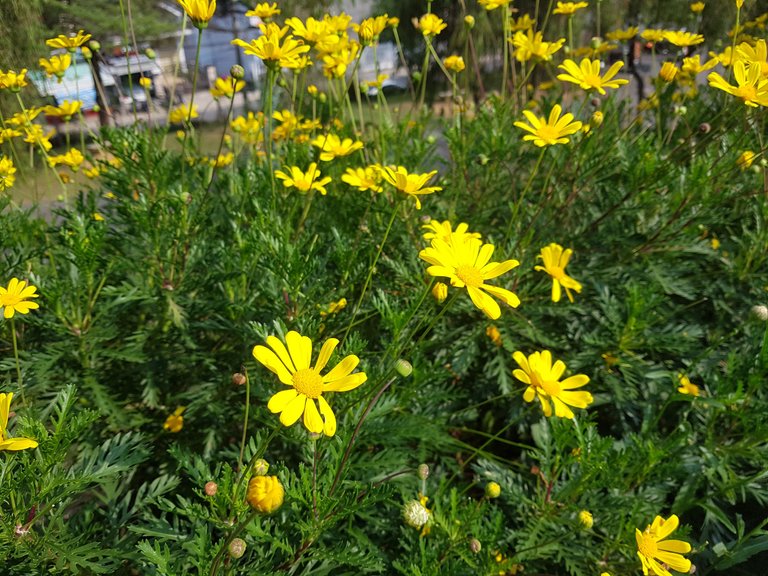
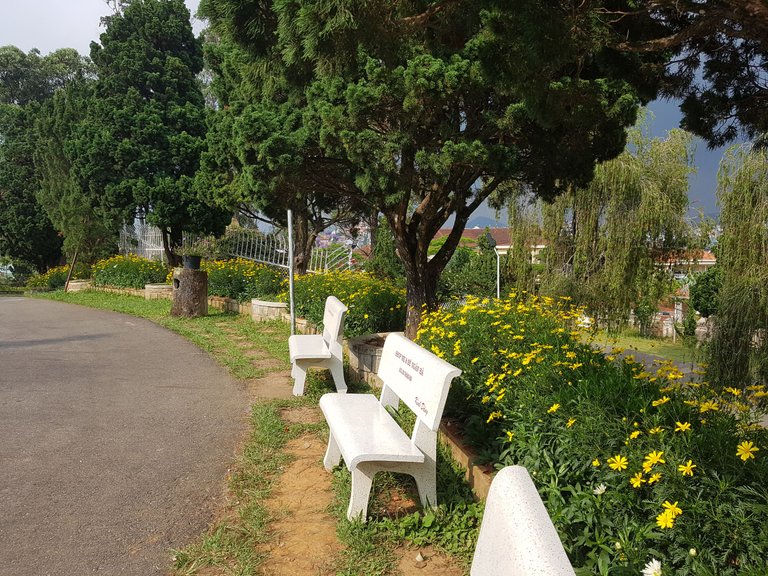
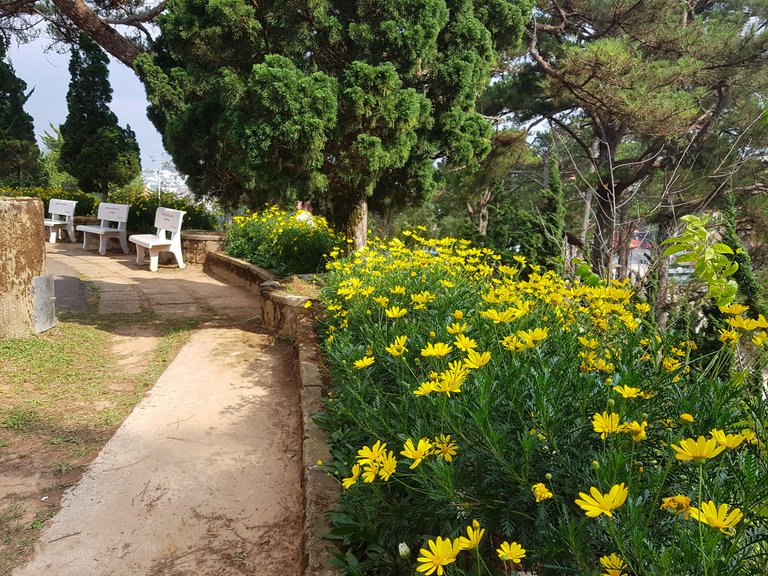
The rear row of houses is also painted pink like the main church, which is the residence of the clergy and the fostering and vocational training area for orphaned and abandoned children. Photography and video recording is not allowed inside, but from the outside I can see the products they are taught to make such as embroidery, weaving, sewing, knitting hats, handmade bracelets and necklaces. Beautiful things come from places full of love.
Thanks God.
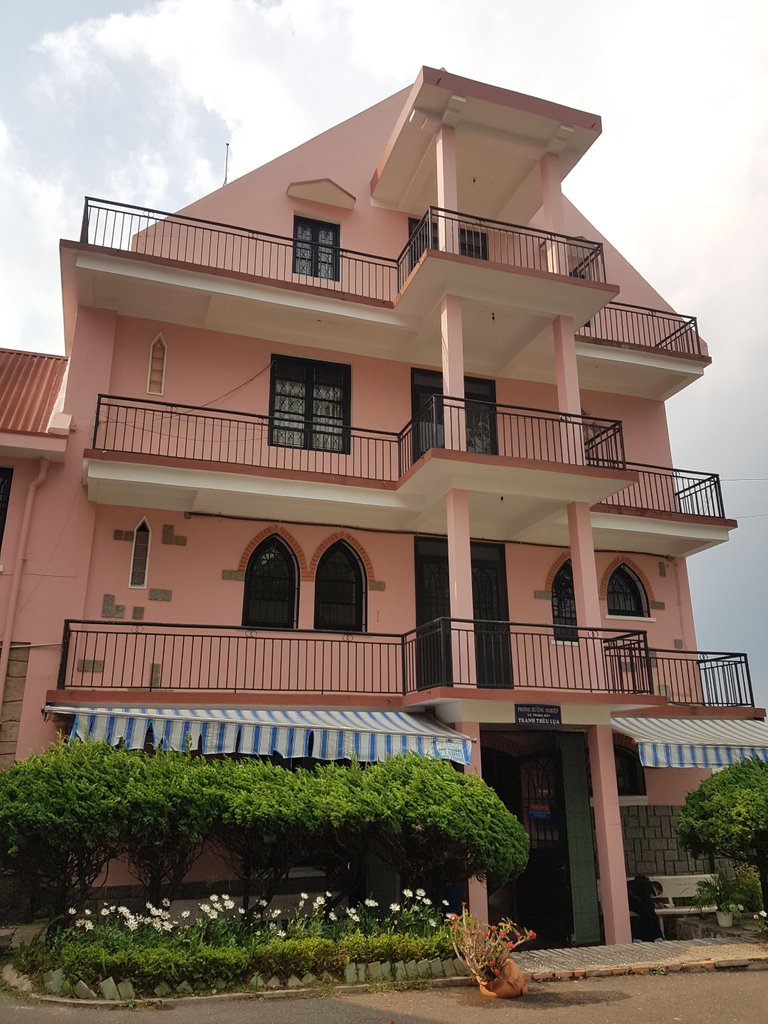
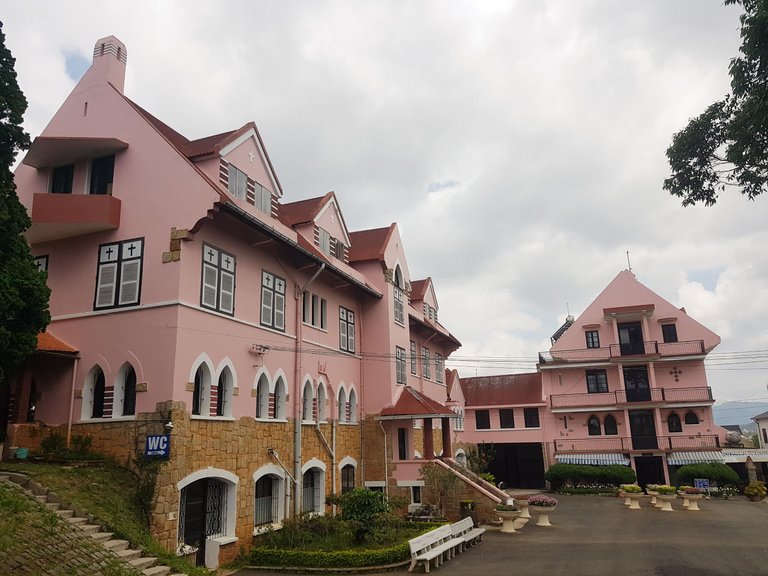
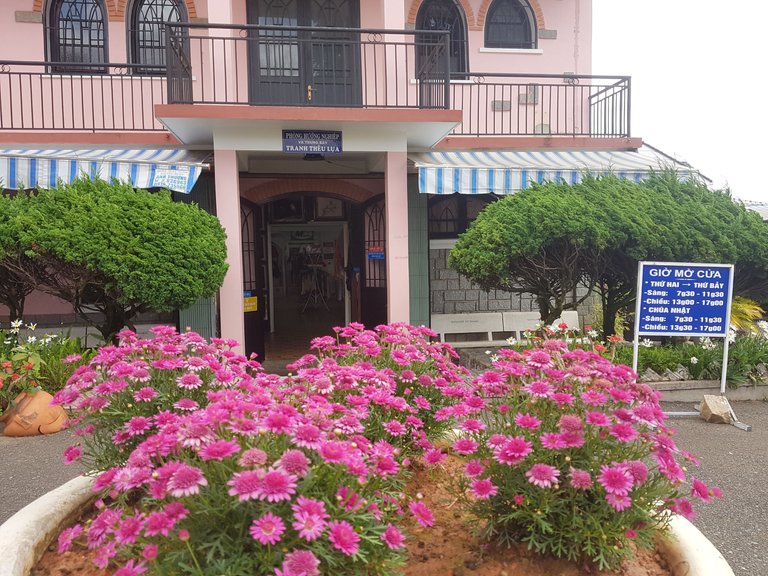
To avoid disturbing the hours of mass and prayer, avoid visiting after 5pm and if possible visit the vocational training area for the children here and don't forget to buy some handicrafts from the local teachers. I make memories and partly help. Give love to receive in return. Thank you.




